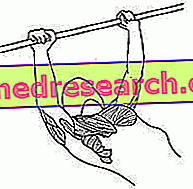Back pain
Everyone, at least once in their life, has had to deal with back pain. Sometimes the pain is resolved quickly, other times it is chronic or reappeared when it was least expected. Whatever the extent and frequency of the disorder, back pain should be considered as a signal that the body sends to indicate that something in the spine is not working properly.

In general we talk about back pain as a multifactorial pathology to emphasize that the origin of pain is linked to numerous interdependent factors that affect the physical, psychological and social spheres .
These last two points, often underestimated, actually play a very important role in the appearance of the characteristic painful symptomatology. Stress, anxiety and other psychological problems, thanks to a reflex nervous mechanism, can in fact increase normal muscle tone. This excess of tension, reducing the vascularization and elasticity of the paravertebral musculature, contributes to the appearance of pain in the lower back. The numerous and intricate mechanisms that give rise to low back pain must therefore be carefully evaluated by a specialized doctor. Starting from the symptoms and causes of the pain, it will thus be possible to establish a multidisciplinary therapeutic path in which various professional figures will collaborate, such as the doctor, the therapist and the graduate in physical education.
Some links to the site's articles on back pain:
Backache in brief Back and spine pain Backache Back pain, true or false Prevent back pain Witches in back and mattress Abdominal muscles and back pain Disc herniation Obesity and lower back pain Back and gym pain Back pain and back painPrevention of back pain
Establishing what are the real causes of back pain is a very difficult task even for a particularly skilled doctor who uses sophisticated diagnostic techniques. Usually at the base of the problem there are no important lesions but simple alterations of the structures that make up the spine. For this reason, around 9 cases of low back pain in 10 resolve positively within a month.
Looking at the various patients, their living and working habits, it can be seen that back pain is more frequent in particular categories of subjects. Thanks to this observation and to the aid of anatomical and physiological knowledge, a series of elements can be established that predispose the individual to back pain.
Most of the main risk factors are linked to the subject's living habits, while genetic predispositions are rather rare. We could then define back pain as an acquired pathology that arises when the extent of the trauma exceeds the capacity of endurance and regeneration of structures adjacent to the spine. For this reason the strategies of care and prevention of back pain must be based on the one hand on the reduction of stress on the spine and on the other on the strengthening of the structures that support it.
To reduce the loads on the lower back we recommend:
- learn the correct lifting technique (legs bent, pelvis retracted, chest erect and load as close as possible to the body)
- avoid incorrect positions kept for a long time
- do not wear shoes with high heels
- choose suitable footwear to wear during physical activity.
To improve the efficiency of the structures that keep the back in axis, protecting it from traumas and, at the same time, allowing movement is recommended:
- do regular physical activity (toning exercises, stretching associated with moderate aerobic activity)
- keep body weight normal
- avoid smoking and alcohol
- allow yourself relaxing breaks, avoiding stress as much as possible
- in the case of back pain, avoid excessive rest, trying to perform movements consistent with the extent of the trauma.
From these recommendations it is clear that the movement has a fundamental role in the prevention and treatment of low back pain. It is no coincidence that a considerable number of medical examinations ends with the indication of regularly performing physical activity aimed at reducing body weight and improving muscle tone and elasticity. Among the many benefits that physical activity brings to the back it is also necessary to remember the positive effect on reducing stress and improving tissue vascularization.



